With Dying Light: The Beast, we wanted to push them further than ever - not only visually, but also in how they behave, react, and sound. They’re the backbone of the experience, and we dedicated enormous effort to making them unsettling, believable, and unforgettable
ARTISTIC VISION
This time our philosophy was simple: zombies should always remind you of who they were before turning. That faint trace of humanity creates hesitation in players - making every encounter more disturbing. As Charidimos Bitsakakis (Character Concept Artist) explained, to avoid lifeless, doll-like figures with glassy eyes, we pushed them deeper into the uncanny valley - human-like realism that’s hard to look at, yet impossible to ignore.
Biters, the most common infected, underwent a complete redesign. Instead of resembling dried, mummified corpses, they now appear rotten and organic, their decomposing skin wet and bloated. Katarzyna Bech (Lead Character Concept Artist) describes this new aesthetic as a “degenerated human” - repulsive, yet believable.
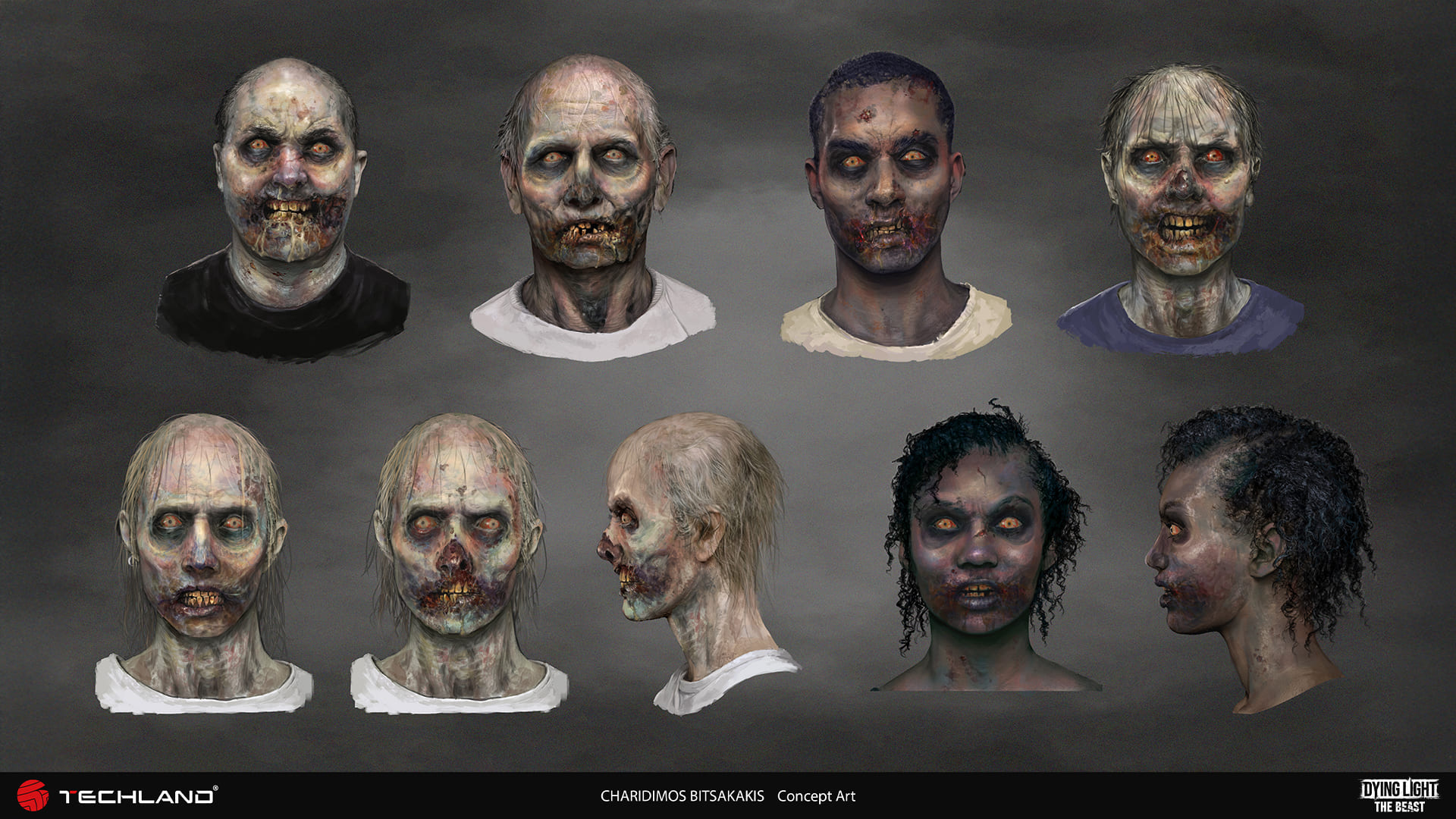
To bring variety, we created over 110 variants of Biters. You’ll encounter different body types - skinny, regular, and obese - as well as special types that introduce unique gameplay challenges, like the classic gas tank Biter, a hazard-suited nightmar
Virals are different. Since in the lore they’ve only recently turned, they retain more traces of humanity - natural skin tones, recognizable features, and the look of someone who hasn’t been gone for long… But that lingering humanity makes them even more disturbing, as we exaggerated blood patterns, their twisted expressions and raw fury blazing in their eyes.
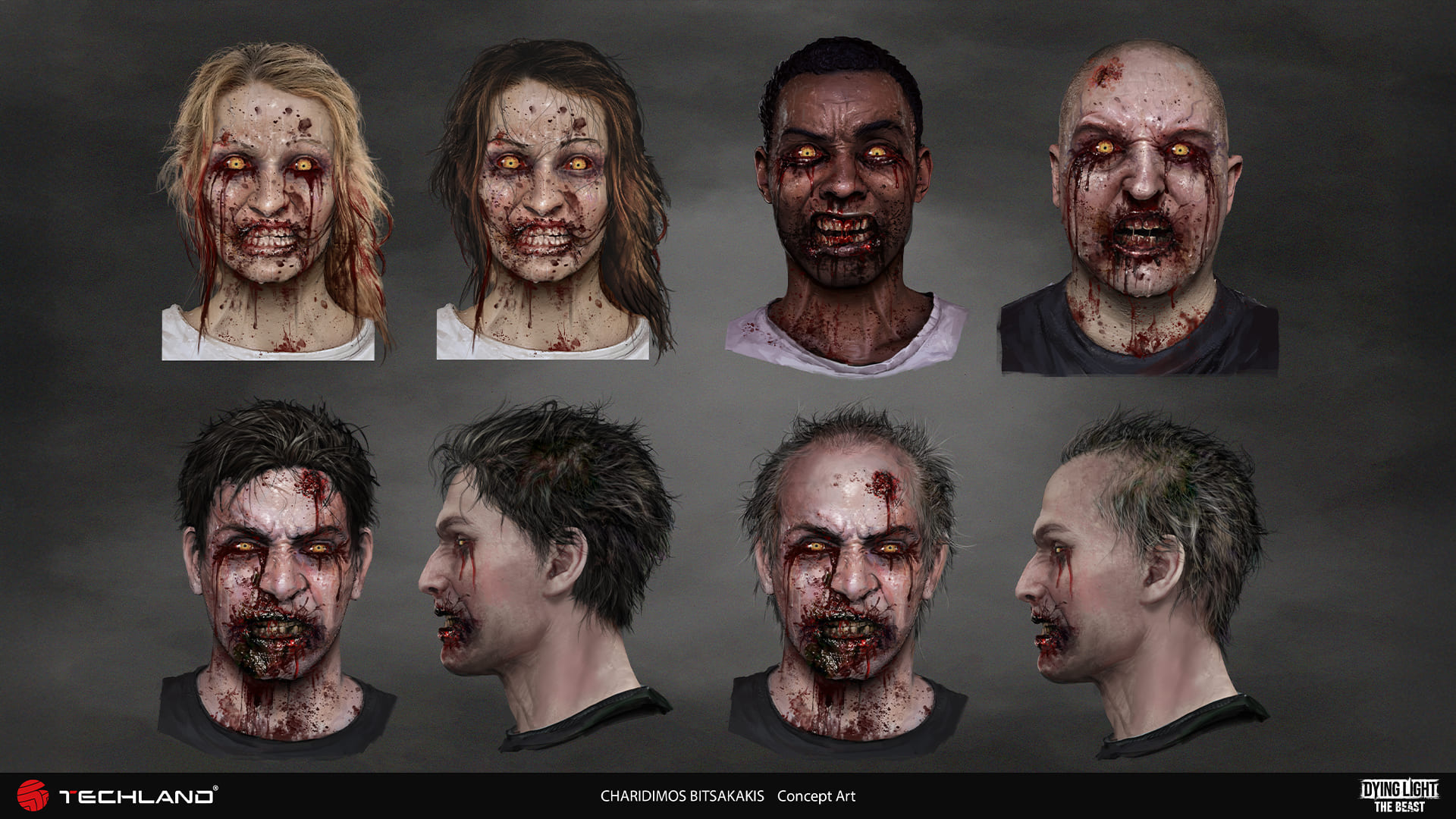
There are nearly 60 variants of Virals in the game. Early on, you’ll face Lab Virals - victims of Baron’s gruesome experiments. Their torn, decomposed skin and open wounds hint at surgical tampering. They look like a halfway step between standard Virals and Baron’s monstrous creations, foreshadowing the horrors yet to come.
Following the same artistic direction for our special infected types, we reimagined them, by grounding each one in who they once were, creating a new character model for each one of them. Their backstories became crucial to their visual design, and their lingering memories influence their behavior. The Howler, for example, is a psychiatric patient still bound by restraints. The Goon is a hulking brute shaped from the body of a blue-collar worker. The Spitter, once a medical professional, now spews corrosive acid from the very chemicals he once used to heal. These archetypes root the infected in reality, making them both familiar and terrifying - and the subtle hints at their past lives reinforce the fear of becoming one of them.
At the same time, we wanted clashes with them to feel just as visceral than encounters with regular zombies. That’s why, when redesigning their visuals, we focused on enabling visible, progressive body damage. Fighting a Goon is a true spectacle of gore: wounds tear open, blood splatters, and destruction spreads across its body, reinforcing that your attacks are having an impact. To achieve this effect, we doubled the number of visible wounds that can appear on any single enemy and expanded the number of damage zones - up to twelve on Biters and Virals, with even more on larger enemies.
And speaking of larger enemies - the true stars of Dying Light: The Beast are the Chimeras, hulking monstrosities born from the Baron’s twisted experiments. By taking different types of special infected and pushing them beyond their limits, he created something entirely new - more powerful, unpredictable, and far more dangerous. As Katarzyna Bech explained, the challenge was to blend gameplay function with visual realism, ensuring they wouldn’t feel like “just monsters.”
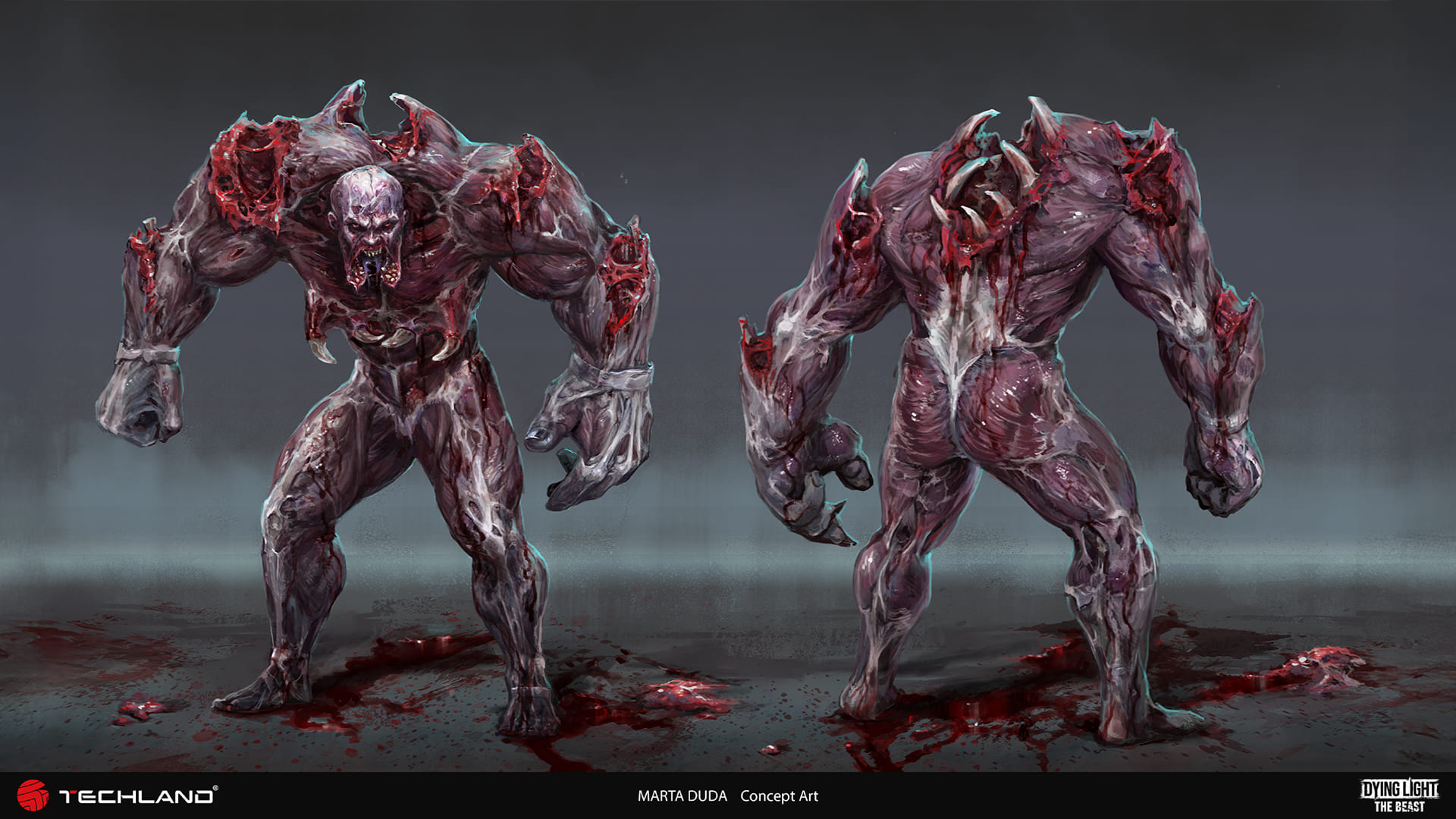
When designing the Chimeras, we took inspiration from human anatomy. Our artists studied medical illustrations and models to understand muscles, tissues, and overall body structure. It was one of the team’s biggest artistic challenges - and also a valuable opportunity to learn and grow.
The Matriarch, one of Baron’s chimeras, perfectly embodies this vision. Inspired by everything from anatomical diagrams to raw meat, she was designed to look like a human stripped of skin, with muscles and tissues exposed. Concept Artist Marta Sokołowska explained her intent: “I wanted to create something haunting and unsettling, like a witch from nightmares.”
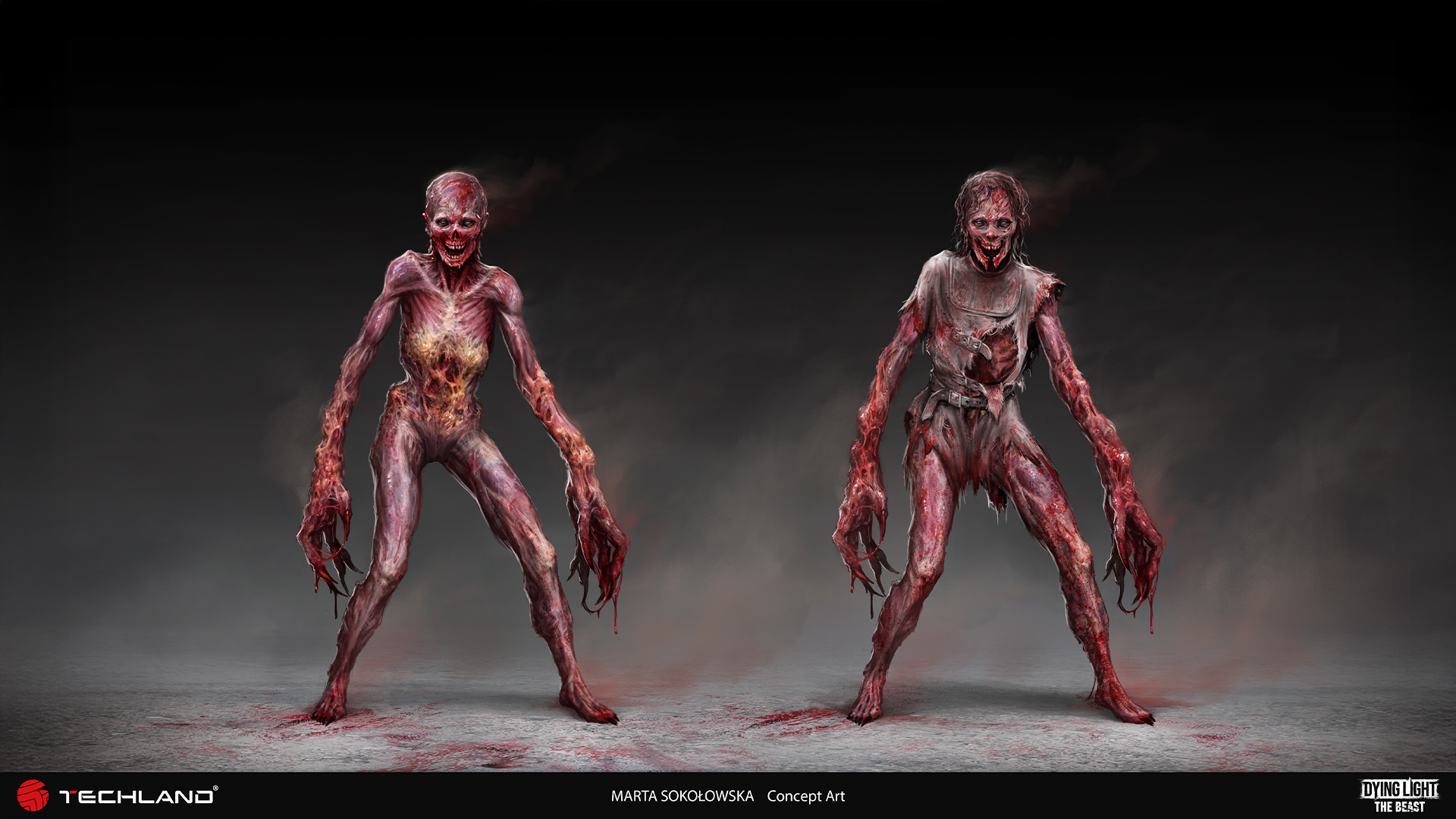
GAMEPLAY
The artistic vision only works if it carries into gameplay, so a lot of our work was focused on two key aspects: making zombies aggressive and reactive to whatever the player does.
Biters are a prime example - when struck, they counter quickly with almost no cooldown, leaving little room to breathe and forcing you to think before engaging. Virals show their aggression and reactivity through more human-like behavior: they’re smarter and faster than Biters, position themselves strategically, and rapidly dodge and shift around you.
Volatiles, our apex predators, are even more dangerous - not just in combat, but in the way they pursue you. We refined their locomotion so they could overcome obstacles seamlessly - alone or in coordinated packs - across every area of our diverse map.
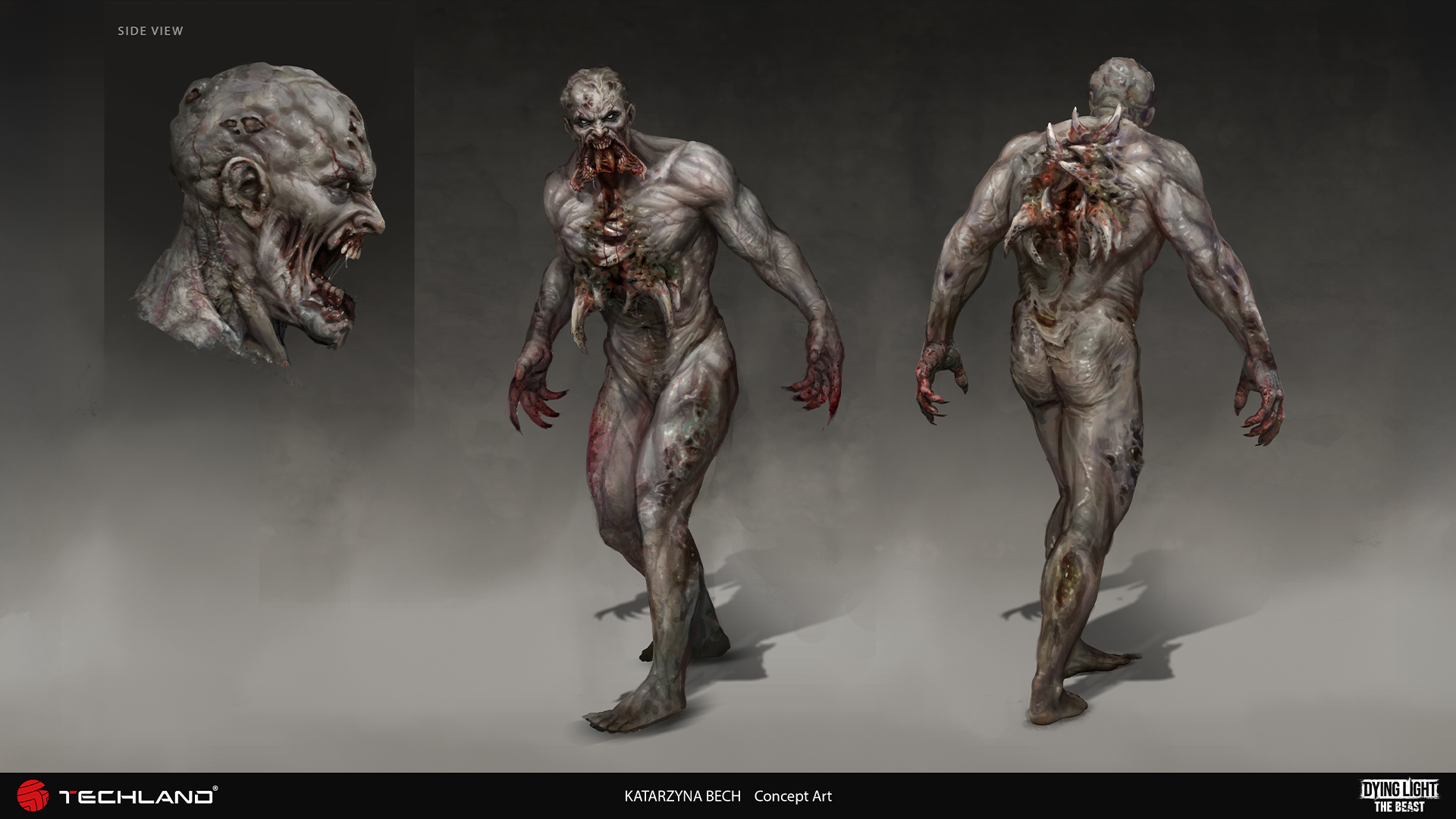
Our work on locomotion led to a complete overhaul of animation and physics in the C-Engine. Some of these changes may seem like small details, but we knew they mattered - because it’s often the nuances that players feel most directly, controller in hand. Enemies now use active ragdolls, meaning their bodies continue to react to momentum even after being struck. For example, you might launch a zombie into the air with a two-handed weapon, only for your co-op partner to kick the flying body - something the active ragdoll will react to realistically.
And then there are the subtle touches players may not expect. When you cut off a Biter’s hand, they don’t simply collapse or keep swinging - they look at it, a fleeting moment of awareness that hints at the human still trapped inside. We also revived a small atmospheric detail: at sunset, some Biters will gaze toward the sun, a quiet reminder that a terrifying night is about to begin.
Sounds
Audio design was the final step in completing the representation of zombies in our game. In line with our overall direction for Dying Light: The Beast, both Biters and Virals sound more human - aggressively human, to be precise - so players feel they’re truly facing infected people, not just fabricated monsters. Their growls, shrieks, and movements carry a raw, almost desperate intensity, amplifying the horror of their transformation. This makes encounters more tense and immersive, as you can almost hear the struggle between the human and infected side within them. Achieving this level of quality required enormous effort - the game features over 9,103 unique zombie soundbites, covering screams, shrieks, and other unsettling vocalizations.
To capture these terrifying voices, our audio designers collaborated with the Canadian team at The Monster Factory, specialists in creature sound design whose work includes The Last of Us Part II, Baldur’s Gate III, and God of War: Ragnarök.
For a closer look at the process, check out this documentary, where voice actors demonstrate how they brought our zombies to life - adding subtle layers of humanity and horror that make every encounter unforgettable.
Ultimate zombie experience
From the smallest detail to the greatest threat, every aspect of the infected has been carefully crafted to make Dying Light: The Beast a truly immersive and terrifying experience. Every encounter tells the story of what these creatures once were, and every scream, strike, and glance reminds you that danger is everywhere.
All of these terrifying zombies will be waiting for you in Castor Woods on September 19!